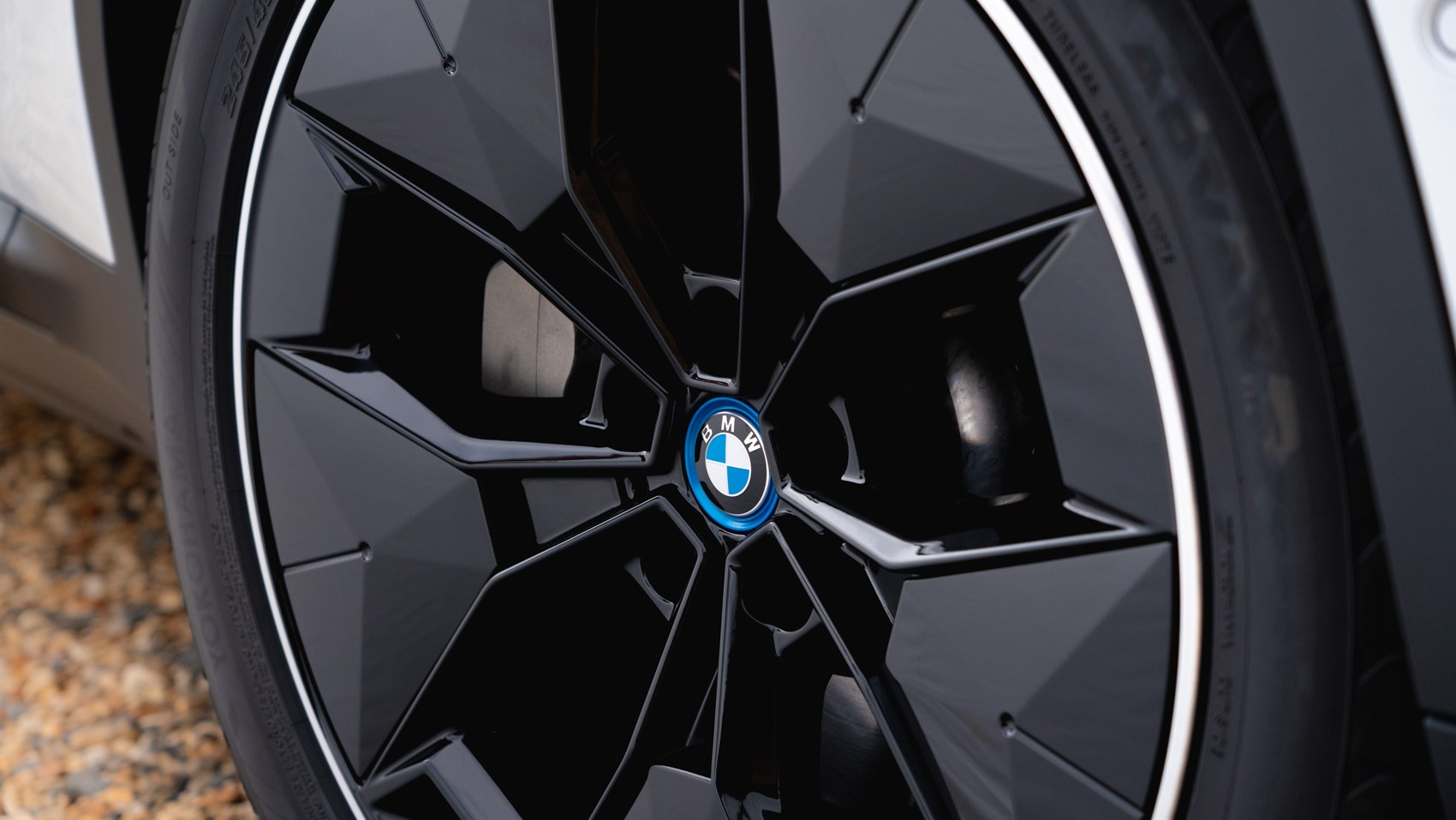► We drive BMW’s all-electric iX3
► Efficient and great to drive
► But it’s at least £60k!
Oddly, BMW’s most conventional electric car yet has also become one of the most confusing new cars to Europeans in 2021. The original car was revealed and went on sale here a good while after it was already on sale in China so, when Europeans who ordered the BMW iX3 got their hands on the Premier Edition, the car had been facelifted by BMW to fit with the regular X3 while it was shipping those orders out.
The facelift brings newer infotainment with more connected services, a slight redesign over the Premier Edition pre-facelift and… that’s about it.
Even with those changes, the fundamentals pre- and post-facelift remain mostly the same: max power is an okay 282bhp, max torque is a feisty 295lb ft, and the redline of the sporty e-motor beckons at a lofty 17,000rpm. There’s also a deficit in acceleration (0-62mph in 6.8sec) and top speed (limited to 112.5mph).
But, with an eye-watering entry-price of £60k, the iX3 is in the firing line of some serious electric SUV competition: the Jaguar i-Pace, Mercedes EQC, Audi e-Tron SUV and even the Volvo XC40 Recharge to name just a few. All of these rivals are quicker, even if none of them don’t vastly differ on range, but which of them is worthy of making it on to our list of the best electric SUVs on sale?
For reference, we’re driving a pre-facelift Premier Edition here. We’ll update our review when we get our hands on the 2022 version.
You sure that’s electric?
We are, although we take your point: BMW’s aiming to make this look exactly like any other X3. Some might see that as a bonus, others want their EV to look different.

The hints, as always from BMW, are flecks of blue inside and out. The iX3 also benefits from some verry cool, bespoke alloy wheels. It’s the same story inside – a nameplate plaque on the centre console and a couple of blue bits including the starter button. Looks very X3-ish in here, with a good driving position, logical button layout and plentiful storage cubbies for family trips.
Starting the glide show triggers a soundtrack composed by the Hollywood soundtrack tsar Hans Zimmer, responsible for the fake firing-up hymn, the 0-112.5mph in-cab hum and the EU regulatory commission which implemented the standardized 0-20mph approach noise relayed to the environment via two external speakers. Though we hope BMW didn’t pay over the odds for Zimmer’s help; we think we could do something similar given long enough with a digital synthesiser.
What’s it like to drive?
At 2260kgs, this is the heaviest X3 by some margin, but it also boasts the most tenacious roadholding since the massive battery stack lowers the centre of gravity by a substantial 75mm. At the same time, the deletion of the combustion engine and eight-speed transmission reverses the weight distribution from a somewhat nose-heavy to a 43:57 percent rear bias, thereby amending traction and playfulness.

The lighter front end and the absence of any front axle propulsion duties transforms the steering which can be putty in your hands or scalpel sharp, depending on speed, driving style, surface topography, radii and ambition. A prolonged stab at the DSC button is all it takes to further boost the entertainment experience.
When pushing on, the iX3 can be all the fun, and then some – on one condition. The recuperation mode must be in the lowest setting; if not, the brief de-throttle opening gambit is invariably followed by a counter-productive slow-down response. Get it right second time round, and the sole RWD variation of the X3 theme is open to drifting.

Hard braking is a hair-raising anti-climax affair in many EVs, but not in this BMW. While other systems are first and foremost interested in maximum recuperation, the iX3 makes deceleration its top priority. The stopping power is fully adequate, the pedal gives early and positive feedback, and repeat action won’t be punished with premature fading. This transparent no-compromise attitude extends to the drive mode calibrations.
Any green credentials?
There are many facets to the brand’s recuperation philosophy. The handbook recommends the adaptive setting which uses cameras, sensors and the navigation system to read the road ahead, monitor traffic and automatically respond to changing conditions like a speed limit zone. In this setting, BMW says the iX3’s AI can allegedly handle 90% of all driving situations without the driver touching the brakes – and it’ll slip into coasting mode whenever safely possible.

Fans of the one-pedal feel pioneered by the i3 may want to flick the transmission leaver to the left into position B which is a little more energy efficient but very much an acquired taste. Option number three is to select one of three recuperation levels marked high, medium and low.
Eco Pro is a tranquilizer designed to quell range anxiety, Comfort is a neatly balanced relaxant for body and soul, and Sport is exactly that, ensuring extra-brisk throttle response, free distribution of the power and torque hormones, unchained acceleration all the way to the limiter.
BMW iX3: verdict
This is still a BMW through and through, with the battery and electric powertrain underneath transforming what is a still-decent-but-ho-hum-in-context X3 into a properly sweet handling machine. It drives so well despite the additional weight we’re kind of baffled as to how BMW has pulled it off. The powertrain efficiency is impressive, too – quelling any sense of range anxiety.
But, even before you get anywhere near an iX3 you’re gonna want £60k. Even if the powertrain is impressive, do you really want to stiff so much wedge for something that looks like any other X3? Jag’s i-Pace, Audi’s e-Tron (or even the smaller Q4 e-Tron), Hyundai’s Ioniq 5, Kia’s EV6 and Ford’s Mach-E are all bespoke designs that compete so closely with the iX3 (and sometimes for less cash) that the case for buying one falls apart.